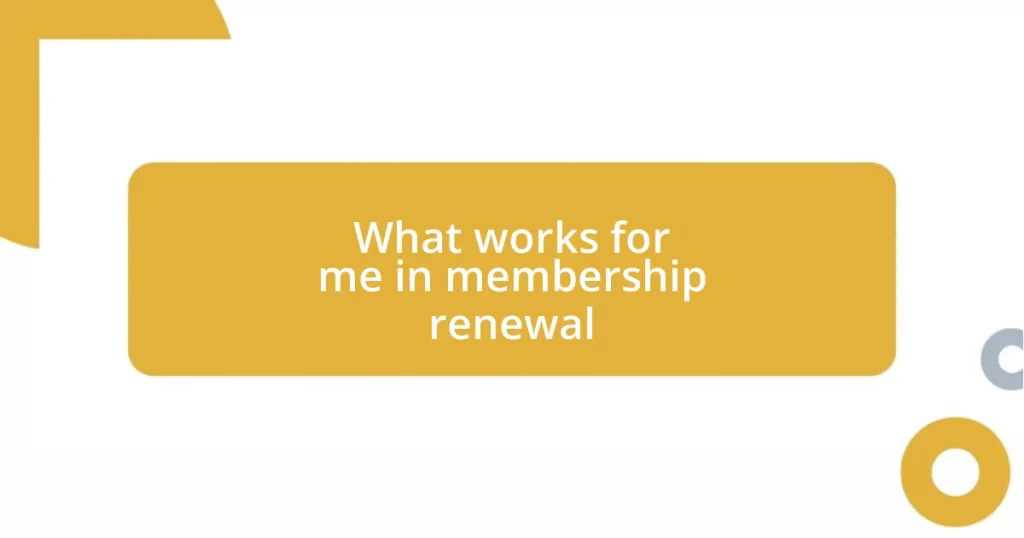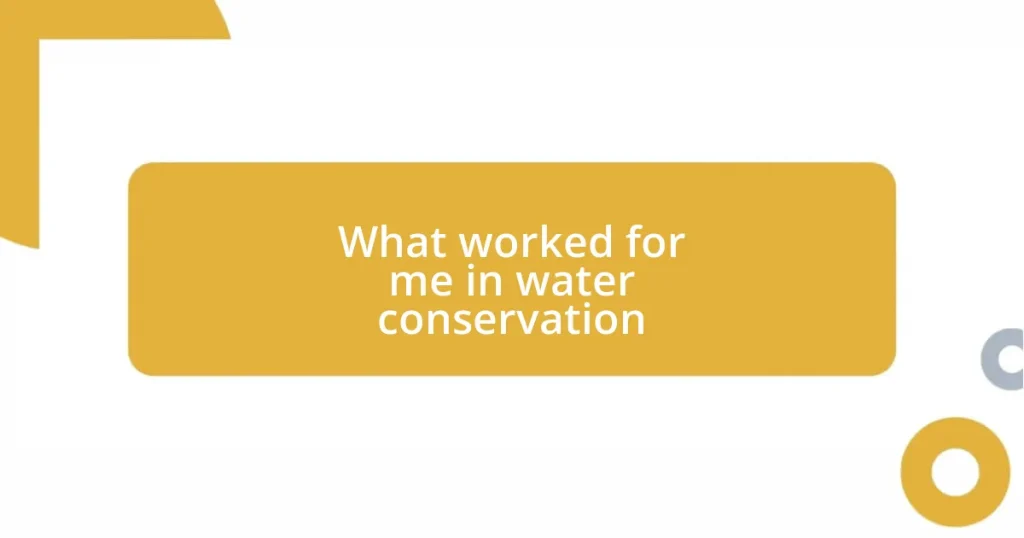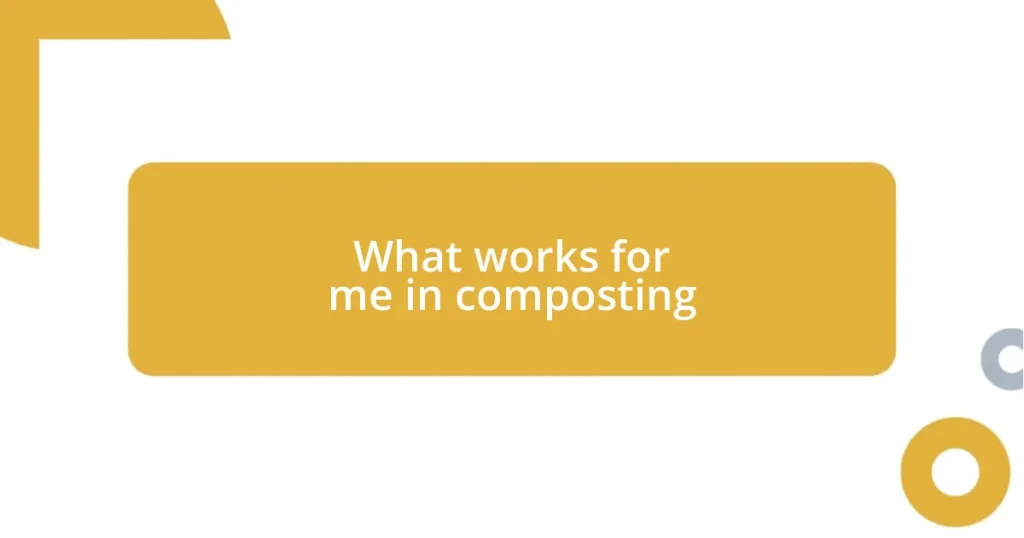Key takeaways:
- Understanding the emotional connection to a community can significantly influence the decision to renew a membership.
- Timely reminders, personal touches, and exclusive benefits motivate members to renew and enhance their overall satisfaction.
- Analyzing member feedback helps organizations improve services and create a sense of shared ownership, which fosters loyalty.
- Implementing automated reminders combined with personalized communication can strengthen member relationships and accountability.
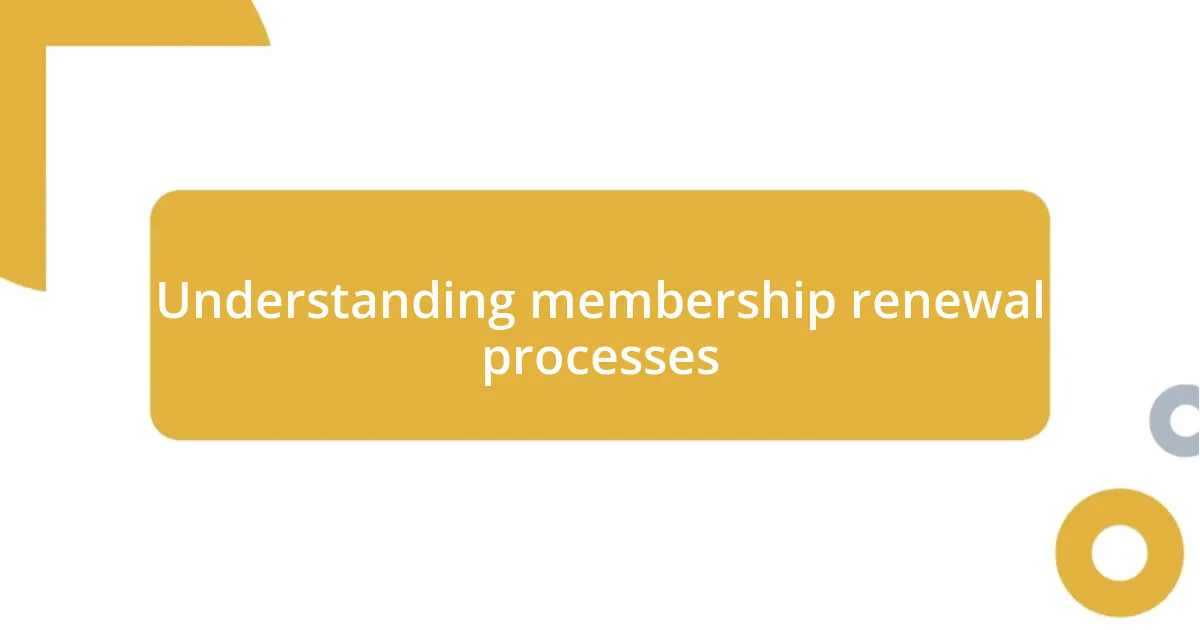
Understanding membership renewal processes
Understanding membership renewal processes can feel a bit overwhelming at times. I remember when I first encountered this; the array of options and deadlines seemed like a maze I couldn’t navigate. It made me wonder: how do others manage to keep everything straight? It’s about getting familiar with the different stages—notification, reminder, and finally, the renewal itself.
A common experience I’ve faced is receiving that first reminder email, which often feels like a gentle nudge in the right direction. I once hesitated, thinking, “Do I really want to go through this process again?” But each time, I realized the value of what I had access to and how it outweighed the hassle. This moment of reflection can significantly impact our decision-making.
The emotional aspect of renewing a membership can also play a big role. I’ve found that it often ties back to our connection with the community or service. Have you ever felt a sense of loss at the thought of not renewing? It’s that connection that transforms a mundane task into a meaningful decision, making the whole process worthwhile in the end.
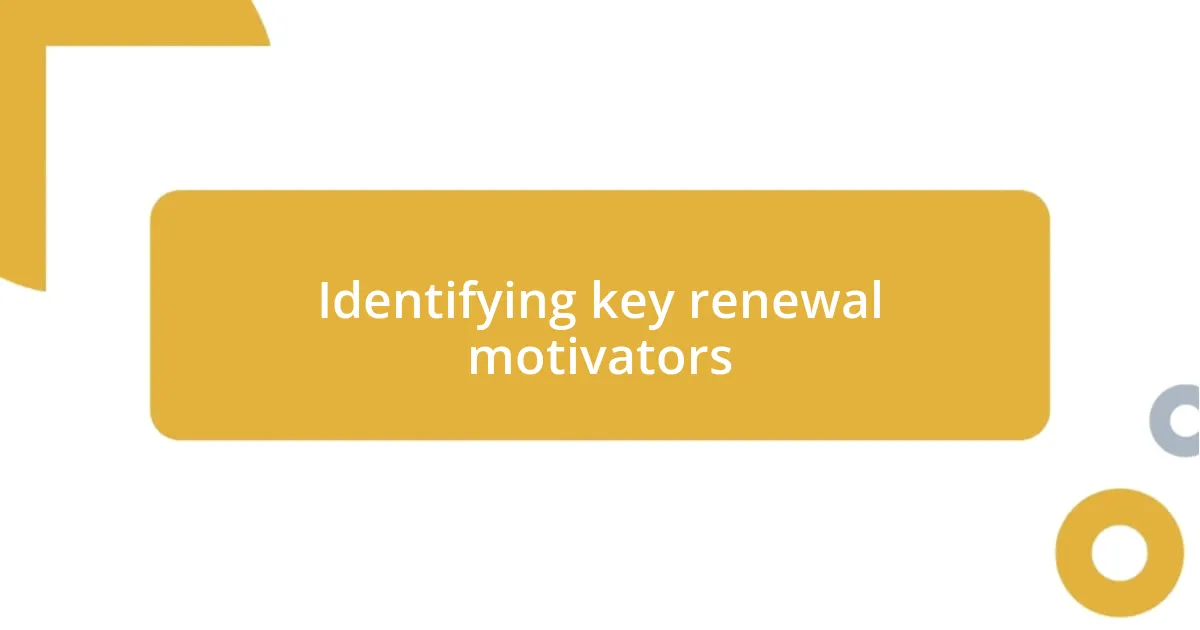
Identifying key renewal motivators
Identifying what drives us to renew memberships can be quite enlightening. For me, it’s often a blend of anticipated benefits and the sense of belonging. I recall a time when I deliberated over a gym membership renewal. I found myself weighing the value of the community I’d grown to adore against the financial cost. Ultimately, the connections I made there swayed my decision; they made the gym feel less like a chore and more like a second home.
Another key motivator I’ve noticed is the influence of reminders and incentives. I remember receiving a special discount offer just days before my membership expired. It caught my attention and prompted me to consider the perks—like exclusive workshops and events—that I would miss out on if I let it lapse. The strategy of providing these timely nudges can be a game-changer in guiding decisions while also fostering a sense of urgency.
Lastly, I believe that a personal touch from the organization can be remarkably effective. I once received a handwritten note thanking me for my membership and inviting me to an upcoming event. That simple gesture made me reflect on my past experiences and the memories I’ve created. It’s a beautiful reminder that we are more than just numbers; we are part of a larger story.
| Renewal Motivator | Personal Experience |
|---|---|
| Sense of Belonging | Strong ties to the gym community led to my renewal decision. |
| Timely Reminders | A special discount offer caught my attention just before my membership expired. |
| Personal Touch | A handwritten note made me reflect on my experiences and memories. |
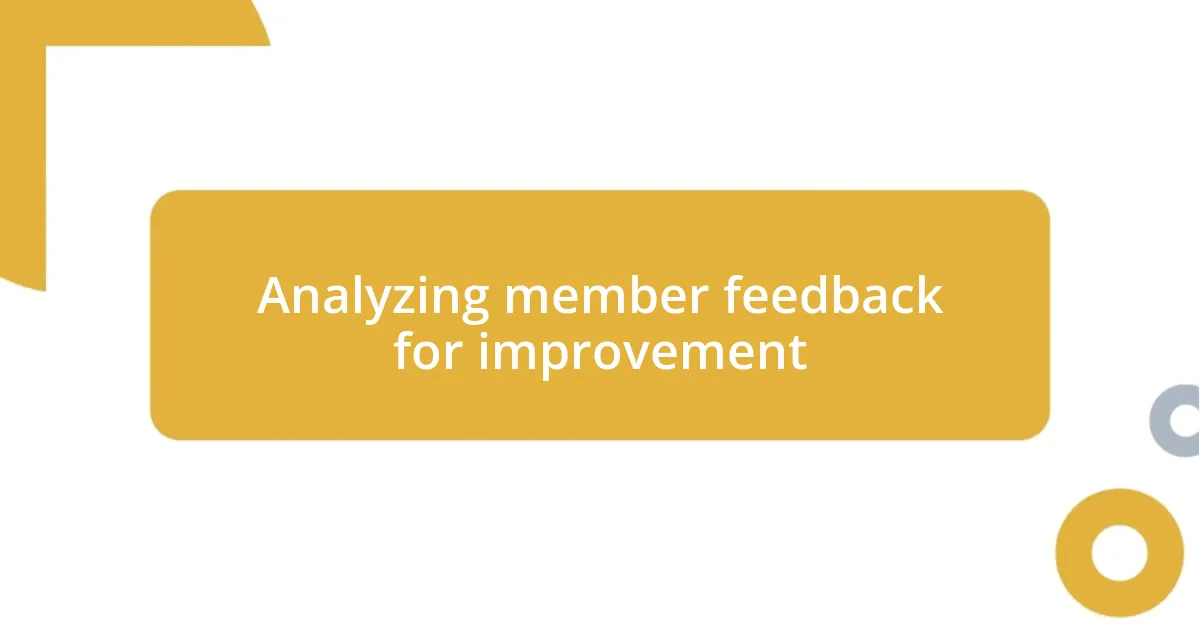
Analyzing member feedback for improvement
Analyzing member feedback is crucial for continuous improvement in membership programs. I’ve experienced firsthand how a simple survey can transform an organization’s approach. Once, I participated in a feedback initiative where members shared their thoughts on the value of events and resources. The results were eye-opening, leading to new offerings that truly resonated with the community. Engaging members through this kind of feedback not only helps tailor services but also fosters a shared sense of ownership.
Here’s what I often find in member feedback analysis:
- Constructive Criticism: Members appreciate when their voices are heard. I remember voicing a suggestion for more diversified activities, and the organization actually implemented a broadened schedule.
- Recognizing Patterns: Analyzing trends in feedback helps pinpoint common issues. For instance, when multiple members voiced concerns about scheduling conflicts, we shifted our event timing, resulting in higher attendance.
- Celebrating Successes: Positive feedback matters too! When a recent workshop received enthusiastic responses, it encouraged organizers to plan more sessions like it, reinforcing what works well.
Listening to and analyzing feedback creates a dynamic environment that benefits everyone. I can’t stress enough the immense value of maintaining this two-way dialogue.
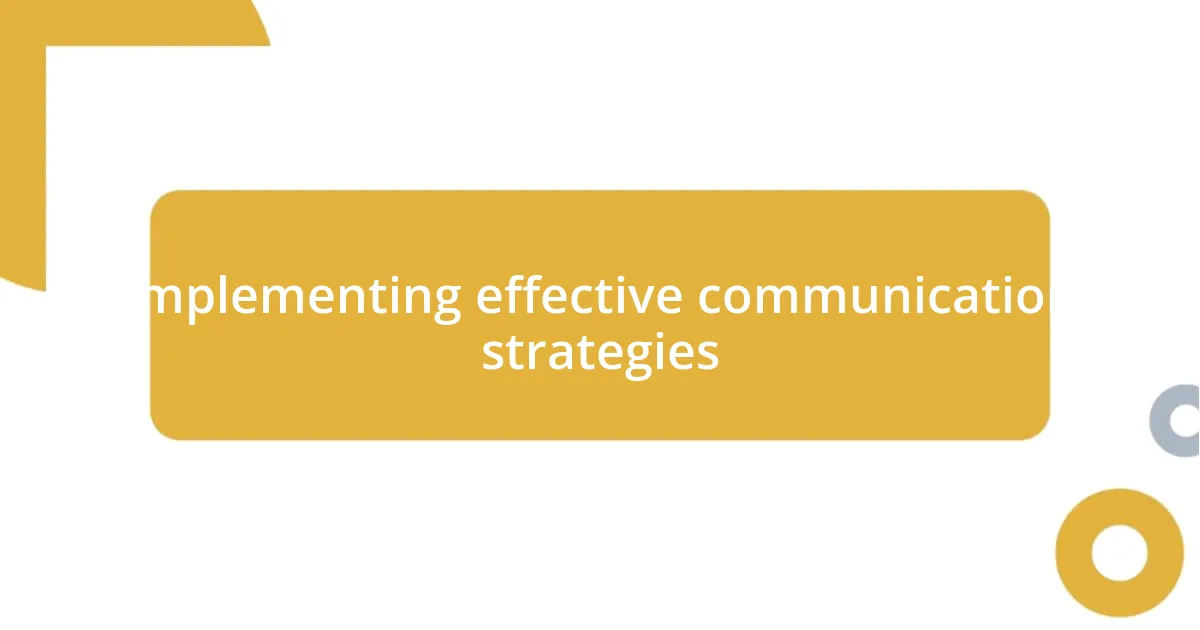
Implementing effective communication strategies
Effective communication strategies are the backbone of membership renewal success. I often think about how clarity is key; clear messaging about renewal deadlines and benefits helps alleviate confusion. There was a time when I missed a renewal because I simply couldn’t find the information I needed—more frequent and straightforward communication could have easily solved that.
Moreover, I’ve learned that using multiple channels enhances reach and engagement. For instance, I recall an organization that combined emails, social media posts, and direct mail to remind members about their renewal. This multi-channel approach not only caught my attention but also made me feel prioritized. It’s interesting to consider: how often do we overlook an important message simply because it was sent through one channel?
Lastly, creating a conversational tone in communications can make members feel valued and understood. I once received a friendly email that used my first name and reflected on my journey with the organization. It wasn’t just about the transaction of renewal; it felt more like a partnership. This type of warmth in communication can transform members from merely paying dues into actively participating in a community.
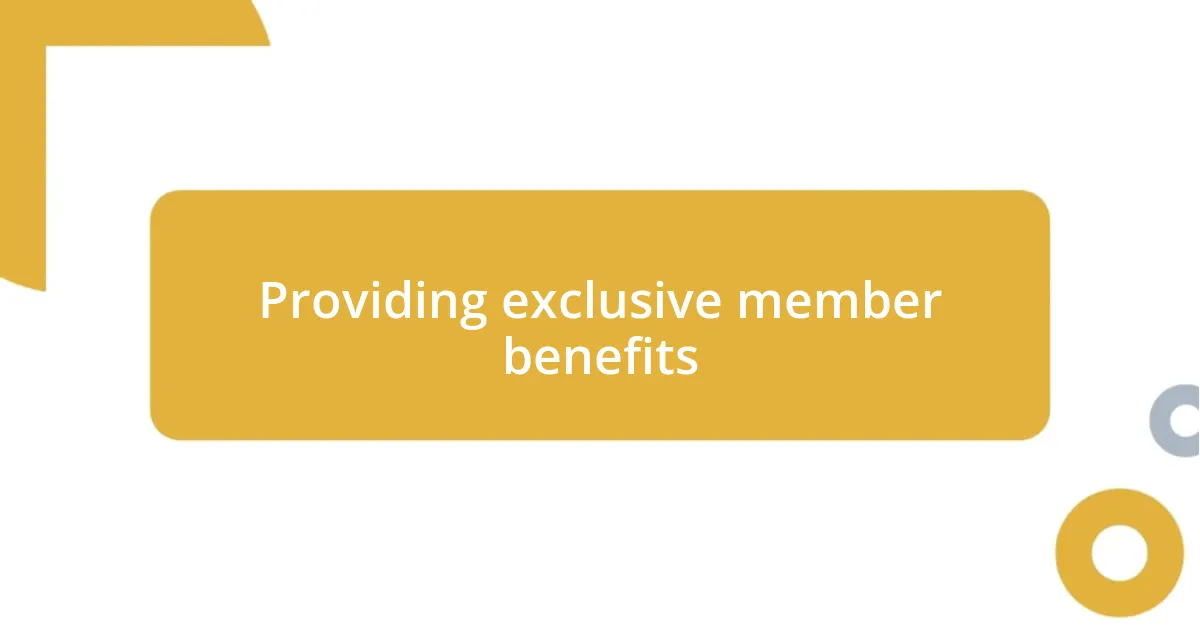
Providing exclusive member benefits
Providing exclusive member benefits is an essential strategy that can significantly enhance member satisfaction and retention. I remember when I first joined a professional organization that offered exclusive webinars to members only. The content was tailored so well, addressing current trends and challenges in our field. It made me feel like I was part of a select group with access to valuable insights that others simply didn’t have. Isn’t it compelling how such targeted benefits can create a stronger bond between the organization and its members?
On another occasion, I was thrilled to receive a special discount on an industry conference because I was a member. That discount made attending the event feasible and underscored to me that my membership truly had monetary value. When organizations offer unique perks like this, they not only enhance the experience but also instill loyalty. I often wonder how many members miss out on these benefits simply because they aren’t aware of what’s available.
It’s not just about tangible perks, though. Some organizations I’ve belonged to have offered members-only networking events, which created a space for meaningful connections to flourish. I recall meeting a mentor at one such event, someone who helped shape my career path. Providing these kind of exclusive opportunities can transform mere membership into a profound, life-changing experience. Doesn’t that make you think about the real value of what membership can offer beyond just services?
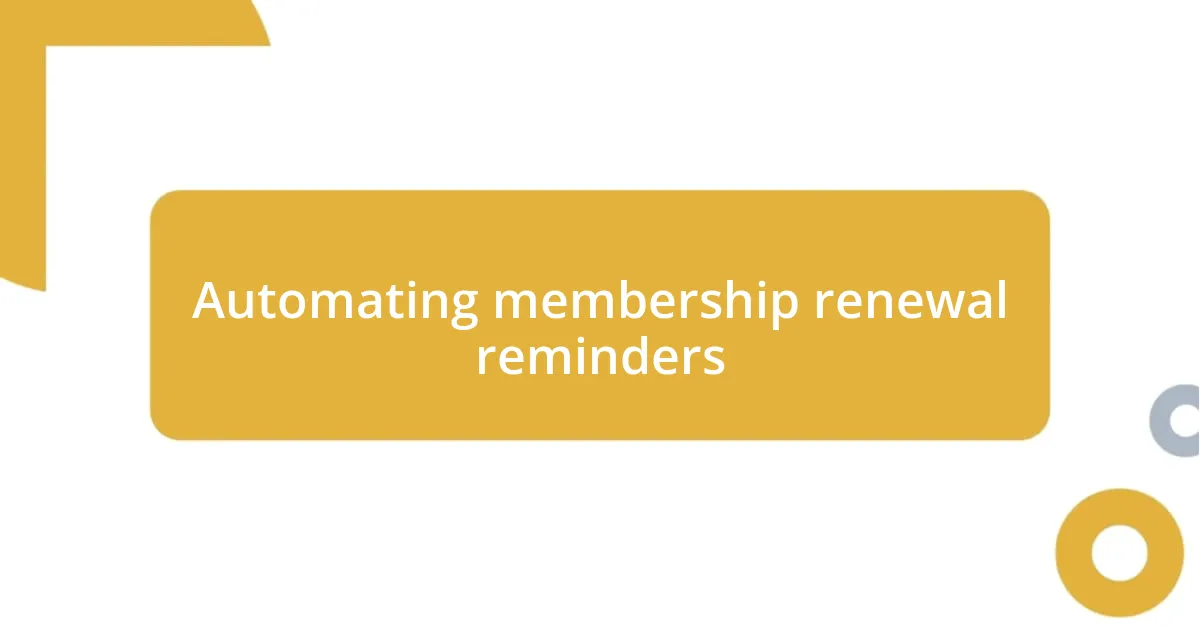
Automating membership renewal reminders
Automating membership renewal reminders has been a game-changer for me. I vividly recall when I first encountered an automated system with my gym membership. A friendly reminder popped up in my inbox a week before the renewal date, providing ample time to either renew or reconsider. It felt convenient and personal—like my gym really cared about keeping me in the loop.
In my experience, automation doesn’t just streamline communication; it also enhances accountability. One organization I’ve been a part of sends a series of reminders as the expiration date approaches, each highlighting different member benefits. This approach not only serves as a prompt but also rekindles my excitement about the perks I’d enjoy if I renewed. Have you ever noticed how a nudge at the right time can make all the difference?
I’ve also found that integrating automation with personalized touches can improve member relations. For instance, after a few years of membership, I received an automated renewal reminder accompanied by a personalized note reflecting on my journey with the organization. It made me feel valued and encouraged me to continue my membership. Isn’t it amazing how technology, when used thoughtfully, can foster a sense of connection rather than just automate reminders?
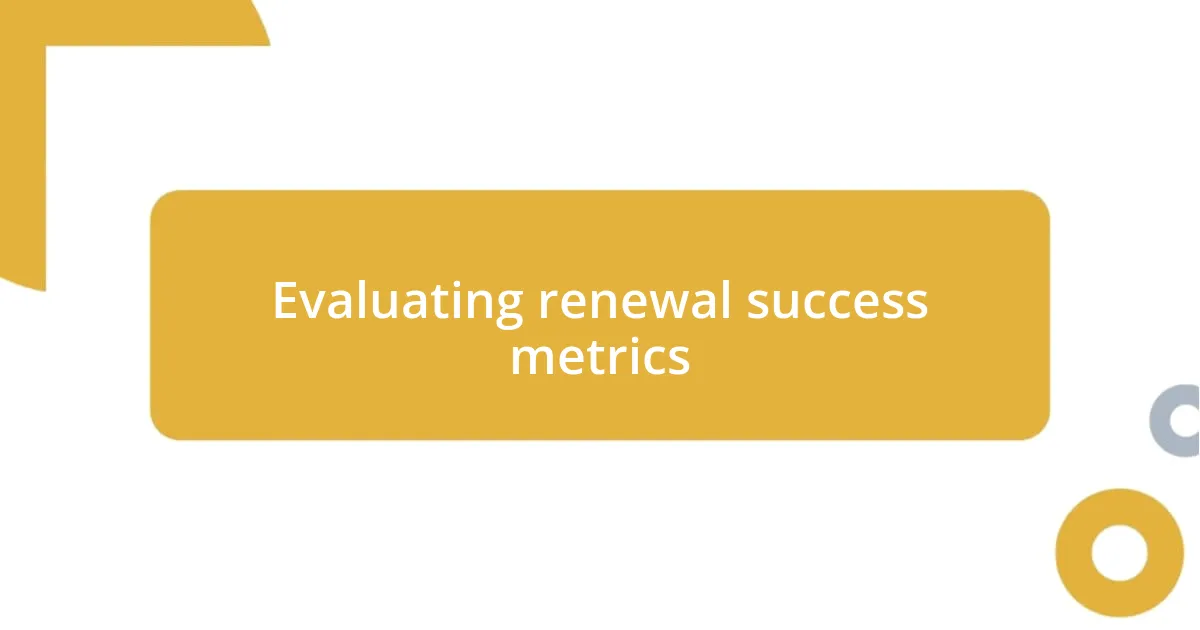
Evaluating renewal success metrics
When evaluating renewal success metrics, it’s crucial to look beyond just the numbers. For instance, in one of my previous memberships, I was part of a community that conducted surveys after renewal periods. They asked simple yet insightful questions about my experience, such as how satisfied I felt about the value received. The feedback not only informed their strategies but also made me feel like my voice genuinely mattered. Isn’t that an empowering feeling?
One metric that I’ve found particularly enlightening is the rate of engagement before and after renewal. When I was a member of a professional association, I noticed that a few months leading up to my renewal, they ramped up their engagement efforts. They hosted more events and increased social media interaction. This proactive approach made me more likely to renew, as I felt continuously involved. Have you ever considered how a spike in activity can signal a commitment to members?
Additionally, tracking retention versus turnover rates can provide a deeper understanding of organizational health. A few years ago, I participated in a group that set a goal to reduce member turnover. They analyzed not just who left, but also why. This analysis revealed valuable insights about member needs and preferences. It left me wondering, how often do organizations genuinely assess why members choose to stay or go? Using these metrics, they embraced valuable changes that made a tangible difference, enriching the overall member experience.










